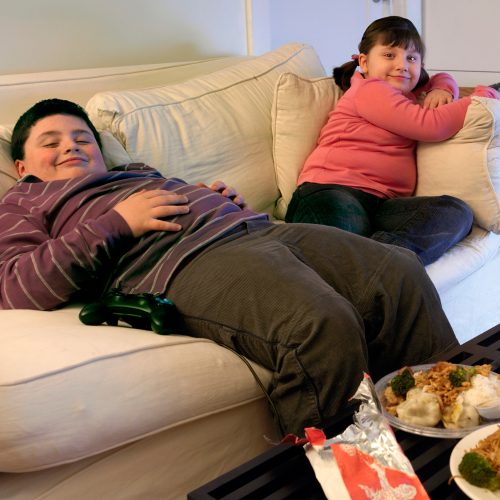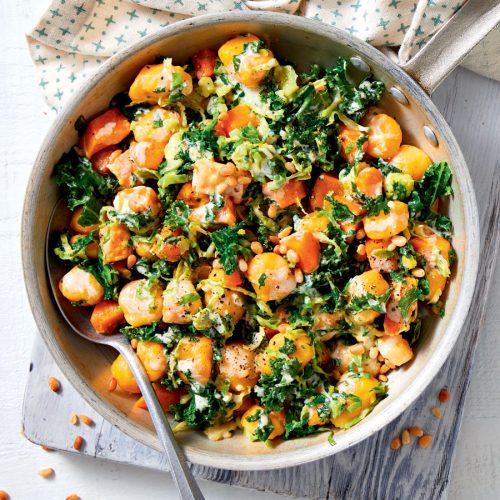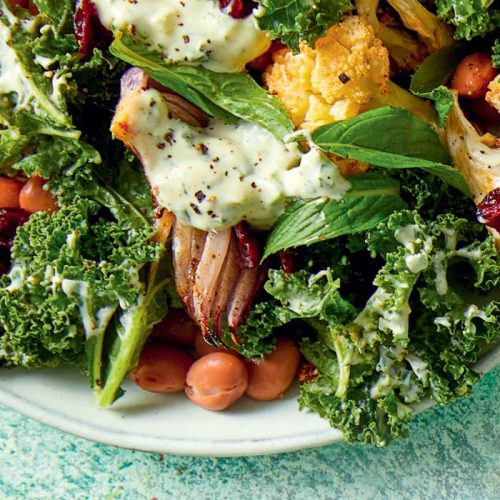
It can be tough managing an overweight child – especially when other children in the family do not have the same problem. Here are some simple strategies for parents to deal with obese or overweight children.
Firstly, never diet a child.
Rapid weight loss will result in failure to grow and is associated with potential vitamin and mineral deficiencies. A child’s diet can be reduced in energy by between 20-25% by simply limiting access to high-fat and high-sugar foods and reducing portion sizes of high-energy foods. This kind of reduction in energy intake is likely to be enough to allow a child to ‘grow into’ their weight so their weight remains constant as they grow taller.
Managing overweight children
Concern about a child’s weight is a FAMILY issue. Healthy food choices and activity is for everyone in the family. Children learn from the example set by parents.
- Don’t prepare separate food for the child or expect a child to exercise alone.
- Avoid calling food ‘good’ or ‘bad’ – instead try ‘everyday’ and ‘sometimes’ food.
- Have ‘everyday’ foods for everyday occasions, like school, and aim to keep treats for special occasions, like parties.
- It is much easier for a child to make better food choices when access to less healthy choices is limited. Negotiate with your child on the number of ‘sometimes’ or treat food/drinks and when those treat foods/drinks are to be consumed. Another way to control treats is to limit allowance (pocket money) spending on treat food/drinks – say $2.00 a week to be spent outside the home.
- Watch the size of portions. Reduce the portion size for low-effort energy reduction.
- Insist on having breakfast at home, and try and make taking lunch to school the norm.
- Help children deal with teasing by discussing appropriate replies and ways to cope.
- Approach the child’s school to adopt a healthy school food policy.
- Be a good role model. Model acceptance and appreciation of your own body, and avoid making complaints about your body in front of your child. It’s important to eat well and be physically active, too.
- Discuss body image issues when they arise and foster positive body image.
Practical strategies to prevent family obesity
Create an active environment:
- Make time for the entire family to get involved in regular physical activities. Cycling is fun and you can create a special outing by hiring tandem bikes (and have a laugh at the same time). Plan ‘special’ activity trips such as ski holidays, or an afternoon at a ‘rocknasium’. Get the neighbourhood involved – join other families for touch football, softball games.
- Get the house cleaned – mow the lawns, wash the car, hang out the washing, bring the firewood into the house. Create a roster so everyone gets a go at all the chores! Structured activity – it has been proven that those kids involved in vigorous activity 3-4 times a week are less likely to suffer ‘lifestyle’ diseases.
- Limit the amount of TV/screen/computer time to 2 hours maximum a day. Less is even better.
- Make celebrations about fun activities rather than food.
Create a healthy eating environment:
- Plant a vegetable garden or even just a herb garden/pot – children will be more likely to eat a vegetable they have grown themselves. Plan a menu together and get the children involved in food preparation. Food management is a life skill that can be learnt from an early age. Limit food bought away from the home to once a week.
- Avoid rushing mealtimes to get on with other things. Slowing down allows the brain to ‘catch-up’ with the stomach and tell you that it is full! Turn off the TV and sit at a table for meal times – concentrate on the social aspect of food. Serve all food in the centre of the table and encourage all family members to regulate their own portions. Believe it or not, children have a ‘natural’ appetite and do this better than adults!
- Use activities and other things as rewards for good behaviour. Don’t use food.
- Don’t force your child to finish up a plate of food if they are not hungry.
- Include healthy foods as treats too, for example fresh pineapple rather than chocolate.
Our modern environment is ‘obesegenic’: our modern society and environment encourage over-consumption of food and makes it difficult for us to get enough physical activity to compensate. High-sugar and high-fat food is readily available and often cheap. Obesity is a complex epidemic but lots of small changes will make a difference. These changes need to happen everywhere; in our families, our schools, our church groups, our sport clubs, our food manufacturers, our councils and our government.
Our children need us to improve their future – quickly!
10 tips for creating a healthy family life
Be aware that the patterns children learn from when they are very young set them up for the rest of their lives, so try to establish healthy eating and activity patterns early. The best example of good eating and activity come from Mum and Dad. Kids will do as you do rather than what you say!
- Make activity a daily family thing – walk to commute and do messages whenever possible, give kids an active chore to do each day. Be conscious of being an active family.
- Play with your kids so they see you being active, too. Set up mini Olympics, soccer, touch, netball, cricket games, swimming and cycling trips. Make up silly family rules to make it fun. Have family disco or dance sessions. Encourage outside play. Children are more likely to be active outside than when indoors.
- Eat meals together as a family at the table, with the TV off and with the same food for the whole family.
- Involve the kids in cooking especially when making meals from ‘scratch’ so they learn basic cooking skills.
- Limit sedentary ‘screen- time’. Make rules about TV watching, computer games etc and don’t put TV in the kid’s bedrooms where you can’t see how long they watch.
- Avoid using food as rewards, bribes or to cheer up a miserable child.
- Children prefer food that is familiar and often reject new foods. Don’t give up after a single rejection. Keep giving them a little bit and don’t make a fuss about it.
- Buy special foods for the special occasions. Don’t keep them in the pantry all the time.
- Have bowls of fruit and other healthy snacks visible and available so they are the easiest food to reach for.
www.healthyfood.com
















